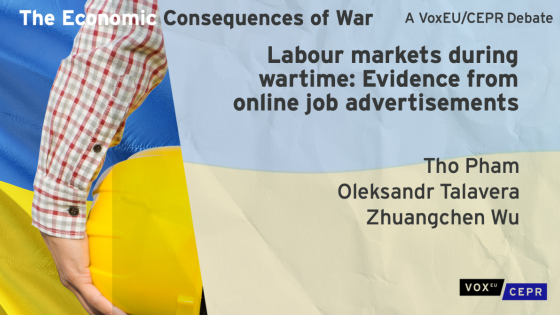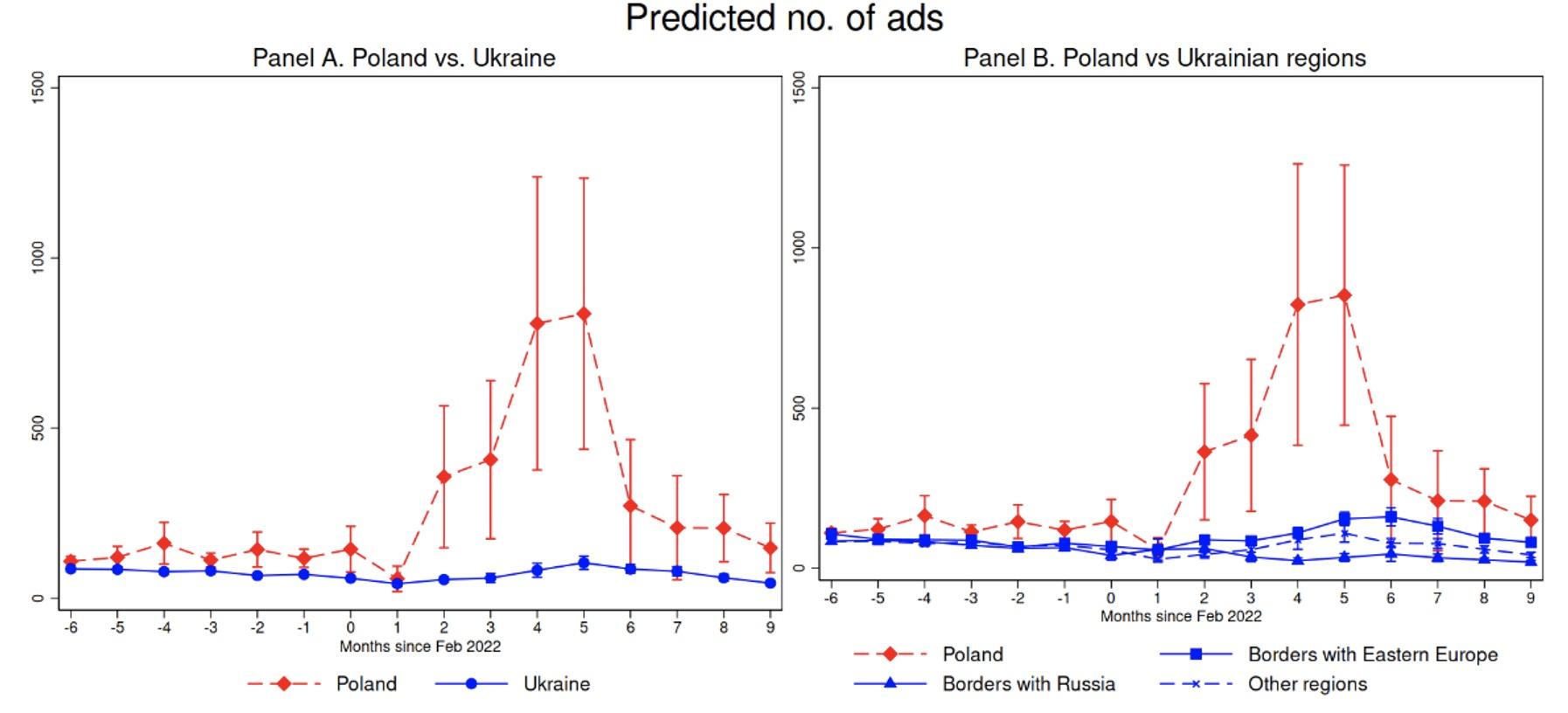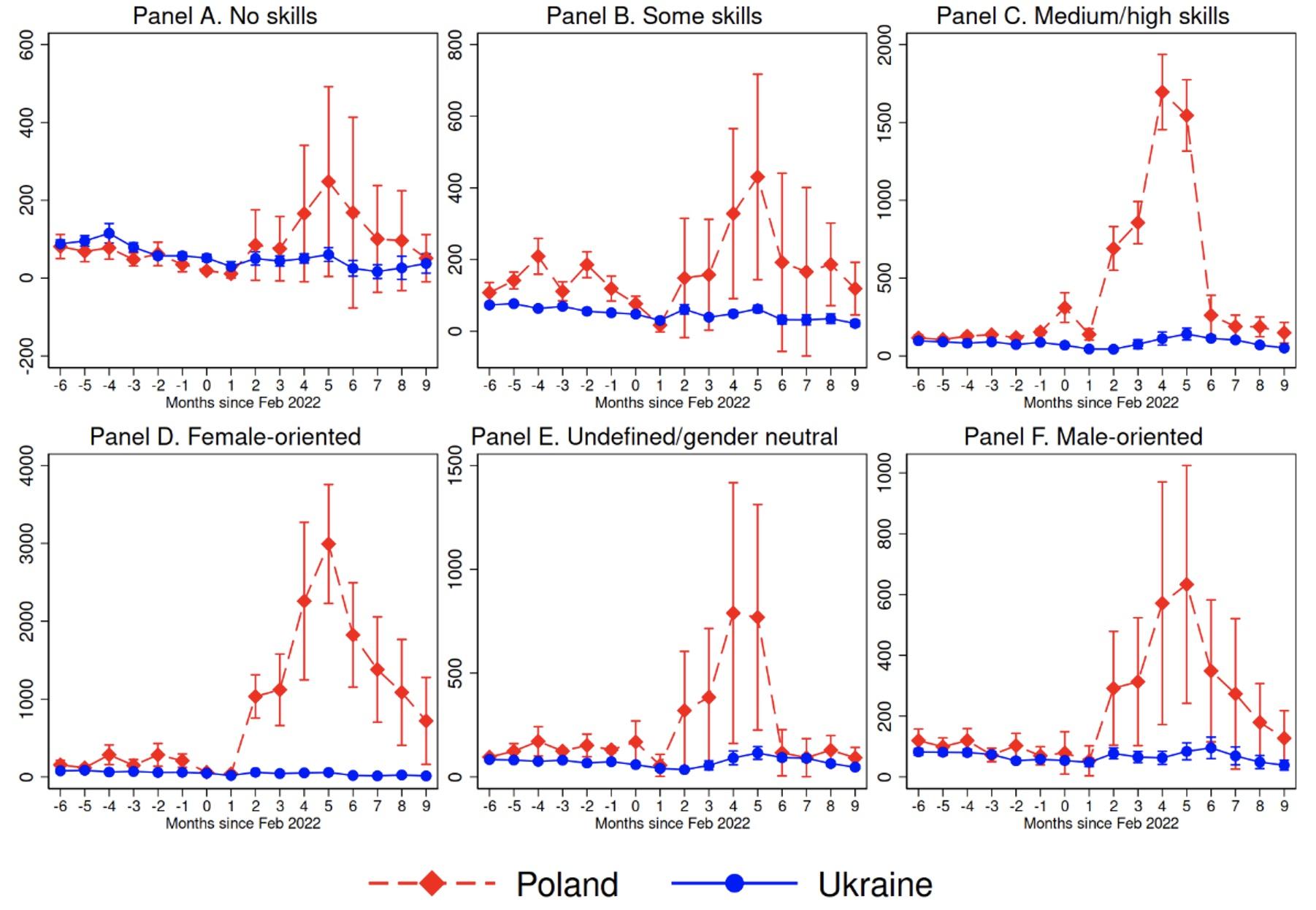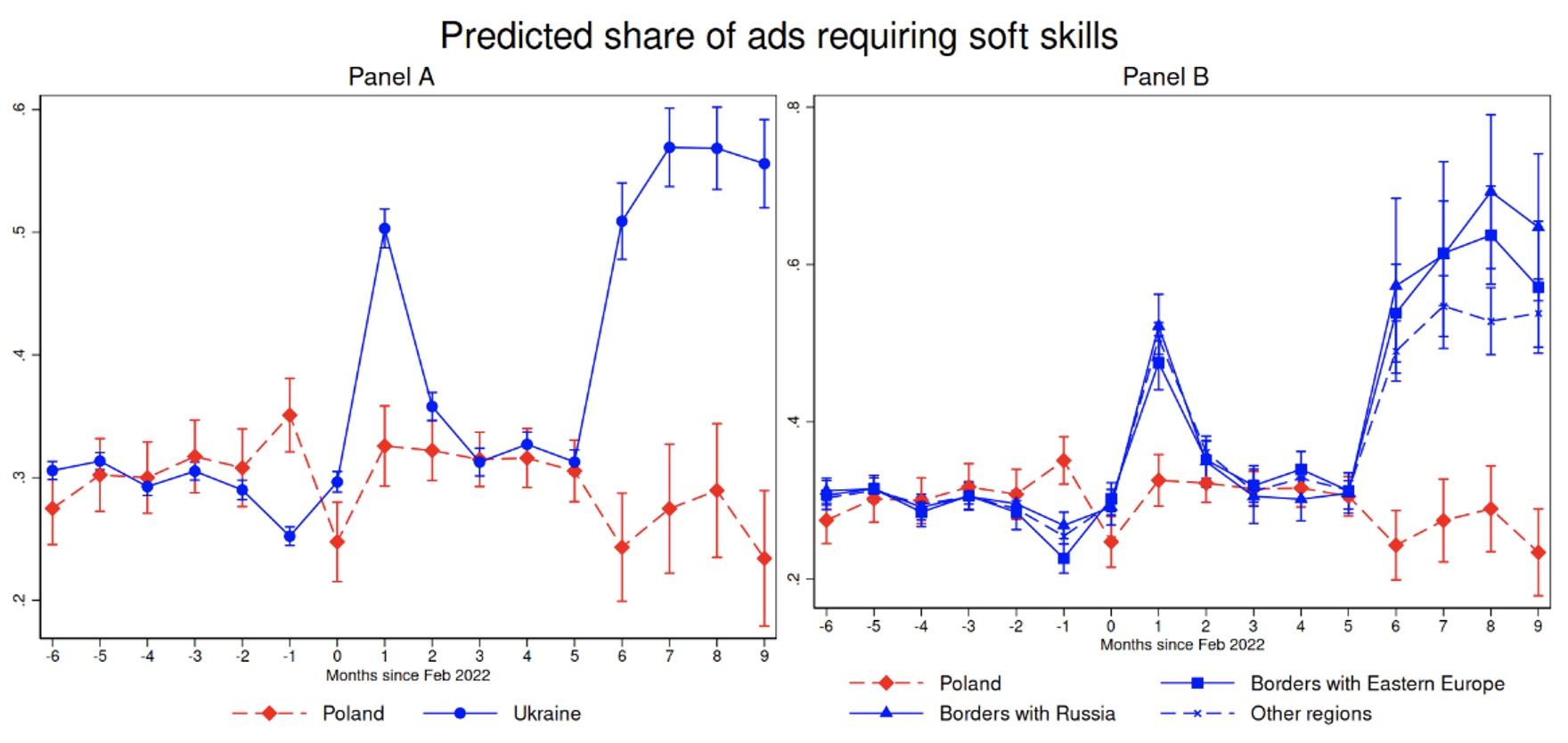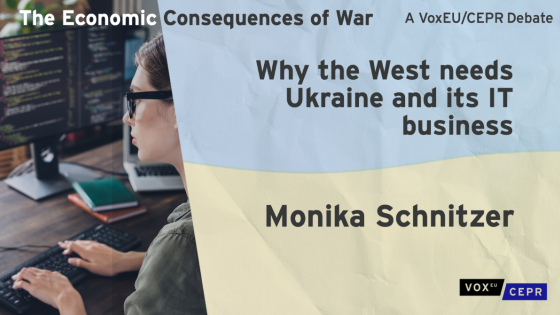Lessons from history suggest that wars have detrimental socioeconomic consequences for the affected areas. For instance, firms can suffer great losses, lower productivity, and worse performance due to the human capital deficit caused by military conflicts (Huber et al. 2021). At the same time, wars also negatively affect the labour market outcomes of forced migrants, with refugees experiencing lower earnings and lower employment rates compared to native workers and economic migrants (Cortes 2004, Ruiz and Vargas-Silva 2018, Fasani et al. 2022). While one can draw parallels from the past with the ongoing Russian invasion of Ukraine, not all existing evidence would apply to Ukraine directly. How has the Ukrainian labour market changed since the onset of the invasion? What happened to the employment of Ukrainian refugees in host countries? In a recent study (Pham et al. 2023), we provide answers to these questions by examining the labour markets for the Ukrainian workers who left Ukraine (‘forced migrants’) and those who remained (‘stayers’) during wartime.
For our analysis, we used a dataset consisting of millions of online vacancies posted on jooble.org. This job aggregator collects and de-duplicates online advertisements posted by Ukrainian employers and international employers targeting job-seekers in Ukraine. Information on job location allows us to look at both domestic vacancies in Ukraine (i.e. jobs for stayers) and jobs in other countries (i.e. jobs for migrants). Since Poland was one of the main destinations for Ukrainian refugees, we focus on comparing jobs in Ukraine and Poland only.
Jobs in Ukraine versus jobs in Poland
Since the onset of the full-scale invasion, there has been a sizeable increase in the demand for Ukrainian workers in Poland. As shown in panel A of Figure 1, the average number of jobs in Poland available to Ukrainians increased from 100 per month before February 2022 to around 800-840 per month in June–July 2022. The increase in demand was largest for jobs that require medium/high-level skills and which are in traditionally women-oriented occupations (Figure 2).
Figure 1 Predicted number of job ads by job location
Notes: This figure shows the predicted number of vacancies by job location. The adjusted predictions with 95% confidence intervals are reported.
In contrast, there is no significant difference in the predicted number of online vacancies in Ukraine before and after February 2022 (panel B of Figure 1). A geographical breakdown of vacancies in Ukraine shows the highest number for jobs in Ukrainian regions sharing borders with Eastern Europe and lowest for jobs in regions sharing borders with Russia. Why is this so? There are several explanations. First, the advertisements might aim to fill the existing jobs that were left vacant because of the war (e.g. firms lost workers). Second, although many firms had to suspend business at the start of the invasion, many subsequently relocated to Eastern Ukraine and so began to hire workers in that region as the war continued.
Figure 2 Predicted number of job ads by location and job heterogeneity
Notes: This figure shows the predicted number of vacancies by skills categories (panels A-C) and occupational gender segregation (panels D-F). The dashed line represents the results for jobs in Poland while the solid line represents the results for jobs in Ukraine. The adjusted predictions with 95% confidence intervals are reported.
Skill requirements and wages offered
We found that employers in Poland have neither increased nor reduced their demand for soft skills (language, communication, teamwork) or analytical skills (panel A of Figure 3). Interestingly, Ukrainian firms tend to require these skills in their ads more often in the post-February 2022 period, perhaps because they are operating in an abnormal and difficult environment. However, the demand for these skills does not come with offers of higher wages. In fact, we find the war has had a negative impact on the wages offered to Ukrainian workers, regardless of work location and job profile. The fall in wages offered is larger in Ukraine relative to Poland and the decrease is slightly less for medium/high-skilled occupations.
Figure 3 Predicted share of ads requiring soft and analytical skills
Notes: This figure shows the predicted share of vacancies requiring soft skills. The adjusted predictions with 95% confidence intervals are reported.
Conclusion
Lessons from history seem unlikely to provide us with an accurate prediction of the impact of the war with Russia on labour markets for Ukrainian workers. Although there are some positive signs of increasing inclusion of Ukrainian refugees into the Polish labour market, more needs to be done to improve their labour market outcomes, for example by helping refugees improve their language and other skills. Moreover, the suggestive evidence of higher skill requirements by firms in Ukraine and the loss of human capital caused by the war pose a major challenge for rebuilding the Ukrainian labour market in the post-war era. Online vacancies provide a useful data source to provide constant and up-to-date analysis of the labour markets to support policy and interventions.
References
Cortes, K E (2004), “Are refugees different from economic immigrants? Some empirical evidence on the heterogeneity of immigrant groups in the United States”, Review of Economics and Statistics 86(2): 465-480.
Fasani, F, T Frattini and L Minale (2022), “(The Struggle for) Refugee integration into the labour market: Evidence from Europe”, Journal of Economic Geography 22(2): 351-393.
Huber, K, V Lindenthal and F Waldinger (2021), “Discrimination, managers, and firm performance: Evidence from “Aryanizations” in Nazi Germany”, Journal of Political Economy 129(9): 2455-2503.
Pham, T, O Talavera and Z Wu (2023), “Labor markets during war time: Evidence from online job advertisements”, Journal of Comparative Economics.
Ruiz, I and C Vargas-Silva (2018), “Differences in labour market outcomes between natives, refugees and other migrants in the UK”, Journal of Economic Geography 18(4): 855-885.
